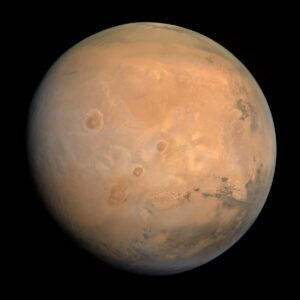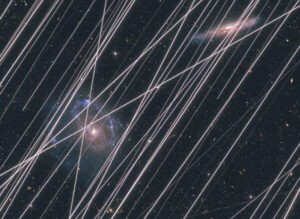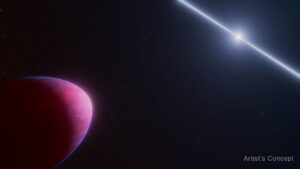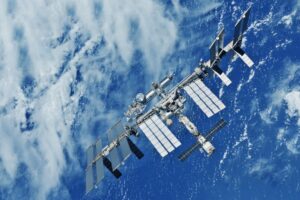In February 1962, astronaut John Glenn hurtled around Earth at speeds close to 29,000kph. He spent a little under five hours in space, precariously encased in the small Friendship 7 spacecraft. The American’s mission was part of Project Mercury, the first human spaceflight program in the United States. It aimed to put a man in orbit and study the effects of space travel on the human body.
During the flight, which made Glenn the first American to orbit the Earth, the veteran pilot witnessed a strange phenomenon that left him and Mission Control back in Florida scratching their heads: tiny glowing particles that seemed to be dancing around the Friendship 7 capsule.
“I am in a big mass of some very small particles that are brilliantly lit up like they’re luminescent. I never saw anything like it,” Glenn reported back down to Mission Control. “They’re coming by the capsule, and they look like little stars. A whole shower of them coming by.”
Back on Earth, Glenn described these particles as “fireflies.”
Mysterious particles
“There were literally thousands of tiny luminous objects that glowed in the black sky like fireflies,” he said. “I was riding slowly through them, and the sensation was like walking backward through a pasture where someone has waved a wand and made all the fireflies stop right where they were and glow steadily.”
This was all rather puzzling for the NASA flight directors at Cape Canaveral. Don’t forget it was 1962, and human space flight was in its infancy. Instead of extra-terrestrial causes, they were more concerned that the heat shield on Friendship 7 might be disintegrating, or that there may be something else wrong with the spacecraft. They also considered the possibility that Glenn might be hallucinating under the still-unknown rigors of space flight.
Both these assumptions were proven false, though. In the same year, Scott Carpenter, another of the Mercury Seven astronauts, shed some light on these peculiar luminous particles.
Frostflies
While piloting Aurora 7, the fourth manned flight in the Mercury program, Carpenter accidentally hit the wall of his capsule, which caused a flurry of “fireflies” to appear outside of the window. The Mercury astronaut reckoned them to be tiny ice particles that had broken loose from the exterior shell of the spacecraft. He dubbed them “frostflies.”
That seemed a reasonable explanation for NASA. As the particles drifted away from the spacecraft, they would catch the sunlight and reflect it back to the window, creating the beautiful illusion of glowing fireflies.

Astronaut John Glenn enters the Mercury spacecraft, Friendship 7, before the Feb. 20, 1962 launch. Photo: NASA
Despite Carpenter’s observation, in the ensuing decades, scientists and space enthusiasts continued to debate what the “fireflies” might be, and what could have caused them. Of course, some cranks speculated that they might be UFOs or some sort of extraterrestrial life form.
Other more plausible theories included the possibility that the ice particles were formed by frozen urine, expelled via the capsule’s waste management system. But that seems less likely given that Mercury flights only included an in-suit urination bag and no waste dumping system.
As the decades passed, Glenn never forgot about the “fireflies.” As a man of devout faith, he could live with not knowing. He did wonder whether that beautiful sight was not guardian angels or divine entities guiding him through the darkness. After 35 years, when he embarked on space flight again at the age of 77, he remained convinced that such magnificence was proof of a higher power.

John Glenn (right) back in space in 1998. Photo: NASA
The likely explanation
By that time though, as he later recalled in a 2012 interview, the particles were determined to be due to moisture from a heat exchanger in the spacecraft. Yet Glenn’s version is at odds with NASA’s official history books. They state that the crystals formed from the small hydrogen peroxide rockets that Glenn’s spacecraft used for altitude control.
NASA points out that a spacecraft creates a small cloud of debris around itself. This forms from gas released via external material surfaces, minor vehicle leaks, control rocket firings, and vented waste materials. Perhaps there’s some credence in the pee theory, after all.
Regardless of the cause, Glenn’s “fireflies” are just one of many unexpected phenomena that he and other astronauts have witnessed during 60 years of human space flight. There were reports of light flashes during Apollo 11, and even “campfires” on the moon during Apollo 8. Science usually has an answer, but for a brief moment, these oddities provide a reminder of how little we still understand the universe around us.






